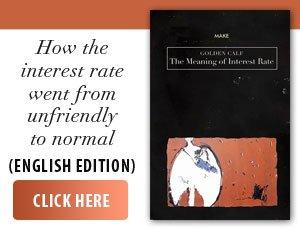Private pension funds are very liquid and can handle payments without any problem, including the peak in payments expected to occur in ten to fifteen years, Radu Crăciun, president of the Association for Privately Administered Pensions in Romania (APAPR), said yesterday at a press conference.
His statements come in the context in which, at the end of last week, the Government debated in first reading the draft law on the payment of private pensions. According to it, participants will no longer be able to withdraw the entire amount accumulated upon reaching retirement age, as is currently the case, but a maximum of 25% of the total, with the rest to be paid in the form of monthly payments. The draft also introduces the possibility of granting a lifetime pension.
Radu Crăciun said: "People must be helped to make correct decisions based on correct and complete information. Or the risk that we see today, at a time when, unfortunately, the information circulated is not of very good quality, is that people make bad decisions. There are participants who, for example, opted to withdraw their money in installments and who, panicked by what they read, changed their minds and want to withdraw all their money at once. For them, this means an additional cost, it means a loss, because the tax they will pay will be higher than the one they paid in the installment payments option."
The APAPR President added: "I would like to clarify two things that seem very important to me, especially since I have seen them rolled around in the public space for a very long time. The first clarification is the following: this law has a neutral impact on the private pension system. In other words, with this law or in the current pension payment system, there is no difference in terms of the impact on pension funds. Both in the current situation and in the situation envisaged by the law, the money will come out of the private pension system in a single payment. So the problem that I have seen invoked, that it is a postponement of payments thought up by private pension administrators in order to benefit from this money for a longer time, does not arise. The administrators will not benefit from this money for a longer time because they will leave the private pension funds for the payment funds. There is no motive for administrators to support one option or the other." Radu Crăciun pointed out that the law on the payment of private pensions has no justification from the point of view of the possibility or impossibility of pension funds to make payments. "Pension funds are very liquid and can cope with payments without any problem, including the peaks of payments that will come," he said.
According to the president of APAPR, inflows into private pension funds will amount to about 22 billion lei this year, while payments will be two billion lei. "There is a large discrepancy between the volume of contributions and that of pensions. Of course, this level will not be maintained. In the future, the number of those who will leave will increase, but, most likely, only the inflows of money into the system will be enough to make payments, even at the peak of payments. It is possible that, at some point, the value of pension fund assets will reach a ceiling, because payments will be made from the inflows, but there is no question of the impossibility of making payments," said Radu Crăciun, estimating that the peak of payments will occur in about ten to fifteen years.
• The decision-making process of the private pension beneficiary
If the amount accumulated by a person retiring is less than 15,372 lei (the guaranteed minimum social pension, which is currently 1,281 lei x 12 months), the payment will be a single payment or in installments over a maximum of twelve months, at the beneficiary's choice, according to the presentation by the president of APAPR.
"This value is calculated based on today's minimum pension, but it will evolve from one year to the next", Radu Crăciun drew attention.
If the amount is higher than 15,372 lei, the beneficiary can opt for a single payment of up to 25%, and for the rest of the amount there are two options: scheduled withdrawal or life pension. "Depending on the payment method chosen, the beneficiary looks for a payment provider that offers the respective product", Radu Crăciun pointed out.
In the case of scheduled withdrawal, if the accumulated amount is up to 153,720 lei (1,281 lei x 12 months x 10 years), then the beneficiaries will receive the amount of 1,281 lei for X months, that is, the total amount collected divided by 1,281, and the last month is adjusted for the yield, according to the presentation. "A pension of 1,281 lei will be taken for a period that cannot be greater than ten years," explained Radu Craciun.
If the amount is greater than 153,720 lei, any monthly pension can be chosen (there is no upper limit), but the condition is that the payment period does not fall below ten years. The last month is also adjusted for the yield.
Undistributed money is inherited, but after the funds are exhausted, payments also stop, according to the presentation. In contrast, a life pension means making payments for the entire duration of life. "The longevity risk is the payer's. This means that if you live a very long time, you can take more money than you contributed, because the lifetime pension is not limited by the amount contributed. But if people live less, the amount received will be less than the accumulated amount, and the remaining amount is not inherited," said Radu Crăciun.
• "The percentage of 25% is not very different from what is practiced in other countries; Poland, Bulgaria or Croatia, all have this system, through which part of the amount can be withdrawn", according to the president of APAPR
The choice of the percentage of no more than 25% of the accumulated amount, which can be withdrawn by a beneficiary, was not related to the possibility of pension funds to make payments - from which, anyway, all the money comes - especially since they do not make the payments, these being made by the payment funds, pointed out Radu Crăciun. "From my point of view, the decision was related to the attempt to achieve a balance between the untimely needs that people may have when they retire and ensuring a balance, at least in the medium term, of the quality of life," said the APAPR president, adding: "We, as a professional association, look a lot at Europe. The administrators who manage money in Romania manage in many other European countries, and the percentage of 25% is not very different from what is practiced in other countries. In some it is 30%, in others 15%, and from the information we have, I believe that only in three European countries there is no provision for partial withdrawal. In contrast, countries similar to ours, with a similar system - Pillar I, Pillar II and Pillar III - such as Poland, Bulgaria or Croatia, all have this system, through which part of the amount can be withdrawn."
Radu Crăciun also added that a person who had an average salary in the economy and contributed for 18 years to the Pillar II private pension system currently has approximately 50,000 lei in his account. "If we divide 50,000 by 1,281, we get about three and a half years. The vast majority will not even reach those ten years, but will consume their pension money before," he said.
• "The misfortune of this law is that it was presented on a very problematic emotional background," says Radu Crăciun
The state announced back in 2008, when the system was established in our country, that there would be a law on the payment of private pensions, and what would happen in the first years would be a rather transitory solution, pointed out the president of APAPR.
According to the law, after three years from the establishment of the system, the payment of pensions was to be regulated, but a transitory situation was perceived as permanent, said Radu Crăciun, adding: "I think the misfortune of this law is that it was presented on a very problematic emotional background, related to other decisions that were not very popular. The ASF has been working on this law for three years, so that it is ready when the decision-makers were going to decide to implement it. It is simply a moment, from my point of view, like any other, that completes the circle of the private pension system."
Another misconception circulating about this law is that it was introduced now to support the budget deficit. First of all, the law will not be implemented for a year and a half. But even after a year and a half, the payment fund will invest part of the amount in government securities and another part in bank deposits. Remember that Pillar II was small at the beginning. That is exactly how payment funds will be - small. When you have small payment funds, of which only a part will be invested in government securities, I do not think we can talk about budget support”, pointed out Radu Crăciun.
According to the president of APAPR, the commissions established for payment funds, of 0.05%, are no different from those practiced by Pillar II funds fifteen years ago. "It is the same commission, because the funds are small, but they have fixed administration costs. "The commission is identical to the one that Pillar II funds had at the beginning of their existence," he said.
• Bolojan: "Let's not wake up with sudden withdrawals that would ruin practically the entire component of privately managed pensions"
Prime Minister Ilie Bolojan explained, on Sunday evening, that the Government is not using the money from Pillar II, and the Financial Supervisory Authority proposed that the money could be withdrawn, upon retirement, in a proportion of 25%, and the rest staggered, over the next ten years, so that "we don't wake up with sudden withdrawals that would ruin practically the entire component of privately managed pensions". In any case, the project will undergo further debates and will be sent to Parliament, writes News.ro
"The Romanian Government does not use this money. The Romanian Government does not take a single leu from this money, and the Romanian Government will not use any of the money that will be given when people retire," the Prime Minister said on Antena 3.
Bolojan states that, from 2030 onwards, there will be a large number of people who will retire. "This law proposes that, just as money is collected month by month with each salary, its payment, after you retire, should be done in a manner that, as the name suggests, ensures you an additional amount in your pension. Taking the model from all European countries - here is some data that cannot be disputed - the ASF came up with the proposal that when you reach this situation, you can withdraw 25% of the money, if you wish, and distribute the difference over the next ten years. It took ten years to cover the average lifespan in Romania", declared the prime minister. He explained that the proposal was made to avoid the risk of massive withdrawals: "We are entering the generation of those who were born in the years 65-75, so a period with a large number of births in Romania, with a peak in births. Amidst tensions, misinformation, let's not wake up with sudden withdrawals that would ruin practically the entire privately managed pension component."
The Prime Minister emphasized that parliamentarians will decide on the pension payment project, and there will be further debates on this topic, according to News.ro.
• Claudiu Năsui, USR MP: "The Romanian State is forcing the funds to use the money from Pillar II to lend to him"
Claudiu Năsui, USR MP and member of the Budget, Finance and Banks Committee, accuses the head of the Government of two "flagrant mistakes" and draws attention to a possible new wave of pressure to limit withdrawals from Pillar II.
"After Prime Minister Bolojan's interview, it becomes clear that the strong lobby for limiting the withdrawal of amounts from Pillar II is not over. The intention remains the same. Two glaring mistakes in the Prime Minister's speech: the first is that Prime Minister Bolojan takes over the idea that the funds from Pillar II are not used by the Romanian government. This is false. Of the 171 billion lei that the funds from Pillar II have under administration, 113 billion are in government securities. That is, 66%. The Romanian state forces the funds to use the money from Pillar II to lend to it. That is, to buy government securities. So the funds are used by the Romanian government and help it finance its deficit. The second mistake, the Prime Minister says that "sudden" withdrawals will affect the system. Pension funds are not banks, so they do not know exactly when people will want to use their money. And they are not insurance companies either, so they have to know when the risks will happen. insured. For pension funds, the time of people's retirement is very predictable. So fund withdrawals are much more predictable than in the case of banks (where it depends on people's wishes) and than in the case of insurance (where it depends on probabilities). There is nothing sudden about withdrawing funds at retirement age. The funds know in advance and can plan the withdrawals in advance. There will be many withdrawals, but not sudden ones. And this is a potentially good thing for people, if they choose to withdraw their money. But bad for the funds because they are left with fewer funds under management and therefore lower commissions. The money in Pillar II is private property and should be respected as such. If Romanians want life annuities or staggered payments, that should be up to them. And the pension funds should convince them to go this way. Not let the state force them. That is if we still have at least a little liberalism in the government", Claudiu Năsui (USR) conveyed.
The PSD does not support the current form of the private pension law, declared Sorin Grindeanu, emphasizing that the party's priorities are the elimination of privileges, discussions with the Ministry of Finance to identify sources of financing and the implementation of major projects such as the Moldovan Highway. "The private pension law, in its current form, is not one that the PSD can support," adds Grindeanu. For the Social Democrats, the priorities are: "the package of privileges, discussions with the Ministry of Finance to find sources of financing and other projects, such as the Moldovan Highway," announces Sorin Grindeanu.
















































